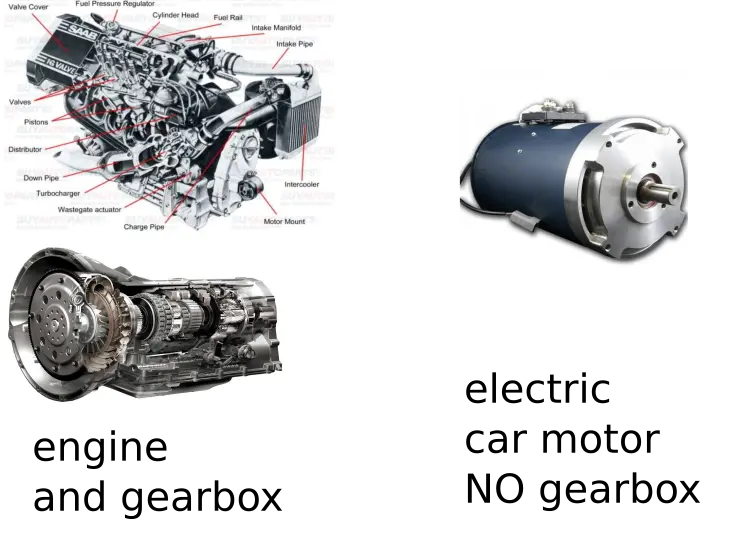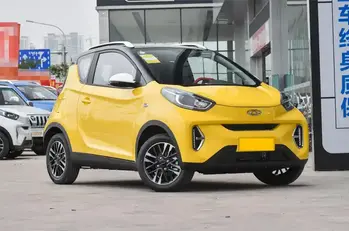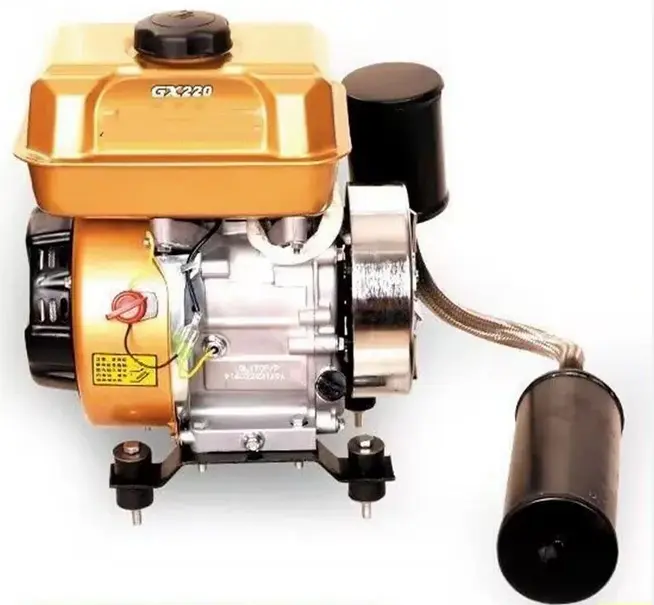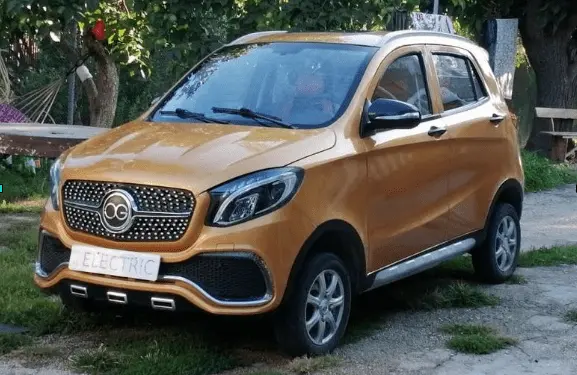
Let’s look at fossil fuel cars (petrol – diesel) and electric cars for comparison purposes. What is the technical difference?
Well first, with an ICE (internal combustion engine) we have around 200 components to make an engine. Did you know there are approximately 800 parts in a gearbox (transmission) that means we have around 1000 parts in total which can go wrong.

Electric cars have full power from a standstill to full speed. They don’t need a gearbox. It can be seen from the image above that an electric car is simplicity itself. It is impossible to stall an electric car and there are only two pedals. GO and STOP. Driving is very much like an automatic car except that when you are slowing down, or going downhill, the electric motor is putting electricity back into your battery simply from the energy of the car going downhill. It also acts as a brake, saving a lot of wear on the brake system.
How many parts are in an ICE and gearbox?
With an electric car, there are 20 or so parts altogether in an electric motor. Electric motors are so reliable that they rarely if ever need to be replaced during the life of the car. What about the gearbox and those 800 parts? Simple. There isn’t a gearbox so no 800 parts.
All this means that there is very, very little to go wrong with an electric car, compared to 1000 parts in an ICE car.
Efficiency: Did you know that 75% of the energy you put into an ICE car is wasted? A petrol engine is on average only 25% efficient at turning fuel into energy, so 75c of your dollar is lost immediately. How about electric cars? Around 85% of the electricity put into an electric car is power with only 25c of your dollar lost.
Power assistance
The steering, brakes etc. are the same in both cases except that the power steering which runs from a hydraulic pump driven by the engine in an ICE car, is replaced by an electric motor in an electric car. Likewise, the vacuum servo for the brakes also runs from an electric motor. Electricity isn’t available everywhere. If the servos fail in either car, the brakes and steering still work perfectly but feel heavier. There’s no difference there.
Fuel is the most contentious second item on the list. Petrol or diesel can be bought anywhere. Electricity isn’t available everywhere on the other hand. So in an ICE car, you have to run around with say 20 gallons (40 litres)of petrol at 6 lbs per gallon – that’s 120 lbs (60 kg) extra weight. Weight is the enemy of power. You need power to move that weight. In an electric car, it makes no difference. An empty battery weighs exactly the same as a full battery.
Although you don’t have the luxury of obtaining petrol virtually anywhere you like with an electric car, most journeys – are shopping trips according to statistics. This means that an electric car with a battery capable of 170km (100 miles) can make the journey many times without recharging.

From the chart above, I don’t understand why people are worrying about how far they can go with a charge. The cars we are talking about on this website are NOT cars for travelling hundreds of km. Realistically, very very few people would decide to travel such a long way in a Fiat 500 for example. Our cars are small cars for local, commuting to work and inter-town driving for which they are highly suited.
Price of batteries for our cars
Lithium batteries for this kind of EV are around 800 USD but remember that on average you will not need a new battery for about ten years. by which time the battery prices will have dropped compared to household income. If we take 800 USD as the price we can see that the cost of the battery works out at 80 USD per year, or less than 7 dollars per month on top of the recharging. The cost of recharging is about half of the cost of petrol so an electric car is very cost-effective.
With such relatively inexpensive batteries, the other worry that the car will be worthless when the batteries eventually die, holds no water. ICE drivers change engines when cars are even 20 years old. What is the value of a 20-year-old car? Is it worth changing the engine on a 20-year-old car? It’s just as viable as changing the battery on an affordable EV.
Remember, we are not talking about long-distance vehicles with 20,000-dollar batteries.







